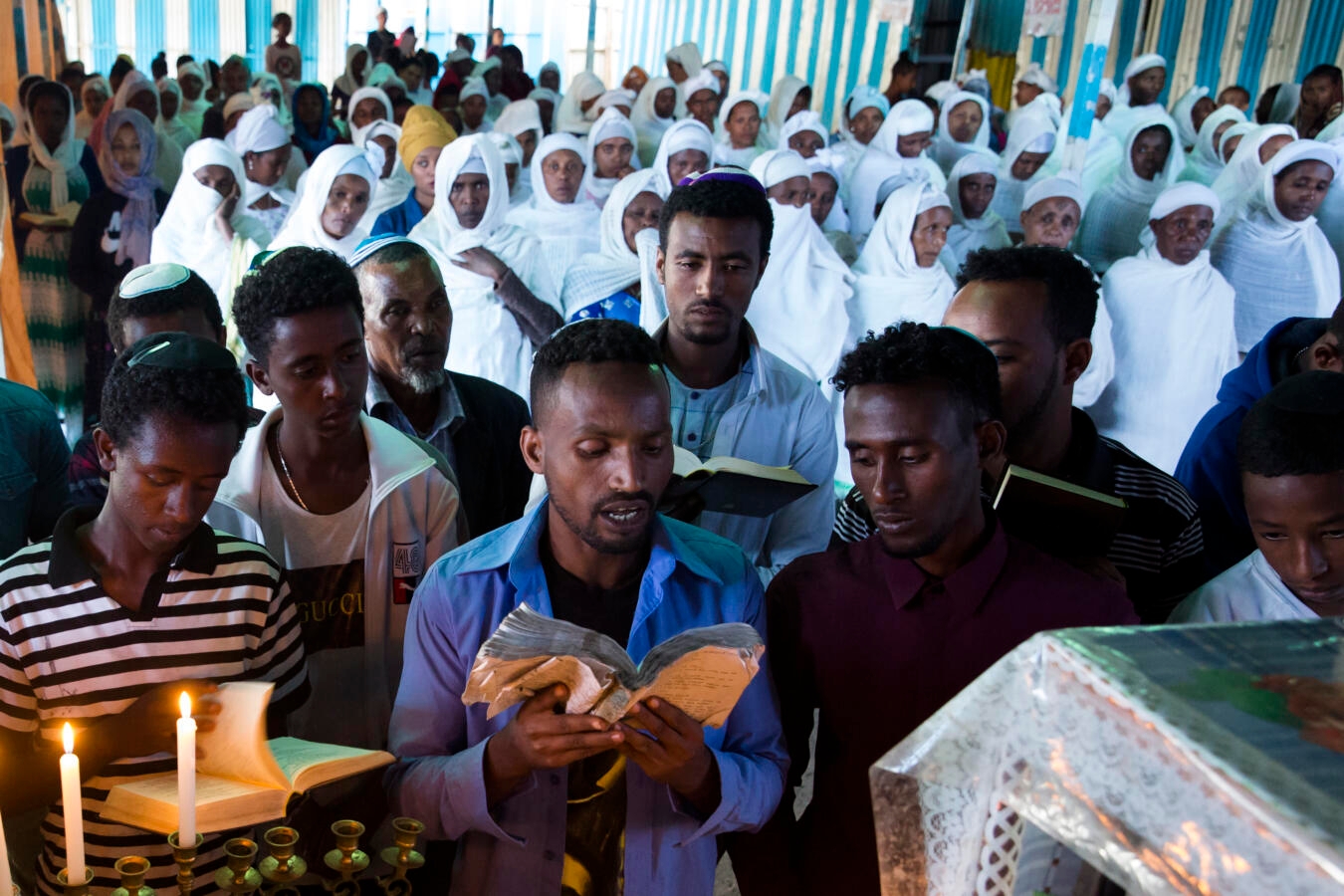A Jewish community in Ethiopia — the Beta Israel (House of Israel) — has existed for at least 15 centuries.
Because of low literacy levels, a tendency to rely on oral traditions, and nomadic lifestyles among most Ethiopians prior to the 20th century, historic material about this community is scant and unreliable. However, a tentative story can be pieced together from written records of Ethiopian rulers as well as testimony from the Beta Israel themselves.
Origins of the Community
Most likely, the Beta Israel arrived in Ethiopia between the first and sixth centuries, coming as merchants or artisans from various countries in the region.

Scholars once believed that during the Middle Ages the Beta Israel were a homogeneous group living under unified, autonomous Jewish rule. Yet new discoveries have shown that the truth is far more complex. It seems the Ethiopian Jewish community was for the most part fragmented both physically and religiously, with each Beta Israel village appointing its own spiritual and secular leaders. There was little contact between Beta Israel communities, and usually no overarching leadership uniting them.
With your help, My Jewish Learning can provide endless opportunities for learning, connection and discovery.
Sometimes the Beta Israel were treated well by the Ethiopian monarchy, but at other times they suffered persecution. Many fellow Ethiopians refer to the Beta Israel as falasha (a derogatory term meaning outsider). In 1624, the ruling king’s army captured many Ethiopian Jews, forced them to be baptized, and denied them the right to own land. According to local legend, some members of the Beta Israel chose suicide over conversion.
Religious Life
Since the Beta Israel community existed in isolation from other Jewish communities around the world, they developed a unique set of religious practices — in some ways quite different from what is typically considered “Jewish.”
For example, an order of Ethiopian Jewish monks was founded in the 15th century to strengthen the community’s religious identity and resist Christian influence. This monastic movement introduced an organized approach to religious practice, creating new religious literature and prayers, and adopting laws of ritual purity.
Historians learned about the community’s religious life in the 19th century from the writings of Joseph Halevy, a French Jew who visited the area in 1867. He provided the first eyewitness account of Beta Israel life from a European Jewish perspective.
Halevy described a community that followed legal sections in the Hebrew Bible and observed laws of purity surrounding menstruation, birth, and death. They observed Shabbat and believed in values such as respecting elders, receiving guests, and visiting mourners. They referred to the as Orit (possibly from the Aramaic term for the Torah, Oraita), and kept their Torah scrolls covered in colorful cloths in houses of prayer or in the homes of one of the kessim (priests).

Like today in Israel, Ethiopian Jews celebrated Sigd, a festival which commemorates the giving of the Torah. On this holiday, community members would fast, climb the highest mountain in the area, and listen to the kessim chant passages of the Hebrew Bible, particularly the Book of Nehemiah. In the afternoon they would descend, break their fast, and rejoice in their renewed acceptance of the Orit.
Missionaries and Trying Times
At the time of Halevy’s report, one of the biggest challenges facing the Ethiopian Jewish community was European missionary activity. Though the community had frequently been pressured to convert by Ethiopian authorities, missionaries from abroad — with large-scale, organized missions — presented an even stronger threat.
European missionaries, well-versed in the Hebrew Bible, were educated and skilled in debate. The Beta Israel’s clergy could not compete. By providing schools and Bibles written in the local language, Amharic, the missionaries challenged the community’s practice and faith.
On a number of occasions the Beta Israel’s monastic clergy tried to escape the missionaries’ influence by leading their communities to the Promised Land (Israel). By and large, these journeys were disastrous. One particular attempt in 1862 ended in large-scale starvation and death.
Between 1882 and 1892 the regions of Ethiopia where the Beta Israel lived suffered from a famine that killed an estimated one third to one half of the Beta Israel.
The World Jewish Community
Halevy’s student, Jaques Faitlovitch, was the first Jewish foreigner to work in earnest on improving conditions for the Ethiopian Jewish community. Arriving for his first visit in 1904 and returning several times in subsequent years, Faitlovitch created tiny schools in Addis Ababa for Beta Israel members, hand-picked 25 young leaders for education abroad, and acted as an emissary on behalf of the world Jewish community.
Faitlovich secured two letters from rabbis abroad acknowledging the Beta Israel as fellow Jews. The first letter, written in 1906, called the Beta Israel “our brethren, sons of Abraham, Isaac, and Jacob, who dwell in Abyssinia” and “our flesh and blood.” The letter, which promised to help the community in its religious education, was signed by 44 world Jewish leaders including the chief rabbis of London and Vienna and the Chief Rabbi of Jerusalem.
The second letter, from 1921, was written by Rabbi Abraham Isaac Kook, the revered Ashkenazic Chief Rabbi of Palestine. He called on the Jewish people worldwide to save the Beta Israel — “50,000 holy souls of the house of Israel” — from “extinction and contamination.”
Faitlovich’s work on behalf of the Beta Israel community came to a dramatic halt with the Italian invasion of Ethiopia in 1935-6. Under fascist rule, it became forbidden to practice Judaism in Ethiopia.
Some of Faitlovitch’s work was undeniably controversial — he created a schism dividing the young, westernized leaders he chose from the elders of the rural communities. But, until the 1960s, no one but Faitlovitch took such a dedicated interest in the community, invested in it financially and educationally, and visited with such regularity. Moreover, it was the letters that Faitlovitch brought to Ethiopia from Kook and other contemporary Jewish leaders that allowed the Beta Israel to cling to their hopes of returning to the Promised Land, and, decades later, for world Jewry to readily accept them.



